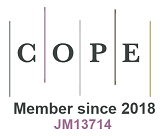Cantus vivit lege Romana!
DOI:
https://doi.org/10.18778/0208-6069.102.07Keywords:
Roman law, Mensural notation, romanesimo, ius commune, Reception of RomanAbstract
In the 14th-century treatise Ars cantus mensurabilis mensurata per modos iuris, the principles of menstrual music are explained by references to ius commune. This article aims to trace their Roman roots and to show that music too is sometimes governed by Roman law.
Downloads
References
Apel, Willi. 1961. The Notation of Polyphonic Music, 900–1600. Cambridge, MA: The Mediaeval Academy of America.
Google Scholar
Arban, Erika. 2017. „Seeing Law in Terms of Music. A Short Essay on Affinities between Music and Law”. Les Cahiers de Droit 58(1–2): 67–86. https://doi.org/10.7202/1039832ar
Google Scholar
DOI: https://doi.org/10.7202/1039832ar
Augustyn św. 1953. „O porządku”. W Dialogi Filozoficzne. Tom. 1. Tłum. Józef Modrzejewski. 146–226. Warszawa: PAX.
Google Scholar
Balensuela, Matthew. 1994a. Ars Cantus Mensurabilis Mensurata Per Modos Iuris. A new critical text and translation on facing pages, with an introduction, annotations, and indices verborum and nominum et rerum. London: University of Nebraska Press.
Google Scholar
Balensuela, Matthew. 1994b. „The «Ars cantus mensurabilis mensurata per modos iuris»: An Example of the «ius commune» applied to Medieval Music Theory”. Rivista internazionale di diritto commune 5: 169–185.
Google Scholar
Brundage, James A. 1976. „Prostitution in the Medieval Canon Law”. Signs 1(4): 825–845. https://doi.org/10.1086/493303
Google Scholar
DOI: https://doi.org/10.1086/493303
Brundage, James A. 1987. Law, Sex, and Christian Society in Medieval Europe. Chicago–London: The University of Chicago Press. https://doi.org/10.7208/chicago/9780226077895.001.0001
Google Scholar
DOI: https://doi.org/10.7208/chicago/9780226077895.001.0001
Daube, David. 1967. „The Marriage of Justinian and Theodora. Legal and Theological Reflections”. Catholic University Law Review 16(4): 380–400.
Google Scholar
Frank, Jerome N. 2018. „Niech zabrzmi jak muzyka”. W Frank. Red. Mateusz Stępień. Tłum. Mateusz Stępień. 17–76. Sopot: Wydawnictwo Arche.
Google Scholar
Jakubowski, Ireneusz. 2019. „Czy o prawie rzymskim można śpiewać?” W Ius est ars Boni et Aequi. Sztuka w prawie, prawo w sztuce. Red. Antoni Dębiński, Maciej Jońca, Izabela Leraczyk. 93–101. Lublin: Wydawnictwo KUL.
Google Scholar
Kamiński, Piotr. 2014. „Popolo di Pekino, la legge è questa…” W O operze i o prawie. Red. Ewa Łętowska, Krzysztof Pawłowski. 9–15. Warszawa: Oficyna Wolters Kluwer.
Google Scholar
Kantorowicz, Ernst. 2016. The King’s Two Bodies: A Study in Medieval Political Theology. Princeton: Princeton University Press. https://doi.org/10.1515/9781400880782
Google Scholar
DOI: https://doi.org/10.1515/9781400880782
Kołodko, Piotr. 2012. Ustawodawstwo rzymskie w sprawach karnych. Od ustawy XII Tablic do dyktatury Sulli. Białystok: Temida 2.
Google Scholar
Liebs, Detlef. 2007. Lateinische Rechtsregeln und Rechtssprichwörter. München: C.H. Beck.
Google Scholar
Łętowska, Ewa. 2005. „Communicare et humanum, et necesse est. O komunikacyjnej misji muzyków i prawników”. Monitor Prawniczy 1: 3–7.
Google Scholar
Manderson, Desmond. 2000. Songs Without Music: Aesthetic Dimensions of Law and Justice. Berkeley–Los Angeles–London: University of California Press.
Google Scholar
Manderson, Desmond. David S. Caudill. 1999. „Modes of Law: Music and Legal Theory – An Interdisciplinary Workshop Introduction”. Cardozo L. Rev. 20: 1325–1329.
Google Scholar
Misztal-Konecka, Joanna. 2011. Bigamia w prawie rzymskim. Lublin: Wydawnictwo KUL.
Google Scholar
Nitrato Izzo, Valerio. 2010. „Playing the Law: on Musical Performance and Legal Interpretation”. W Law, Liberty, Morality and Rights. Red. Tomasz Gizbert-Studnicki, Mateusz Klinowski. 38–46. Warszawa: Wolters Kluwer.
Google Scholar
Otis, Leah Lydia. 1985. Prostitution in Medieval Society: The History of an Urban Institution in Languedoc. Chicago: The University of Chicago Press. https://doi.org/10.7208/chicago/9780226640341.001.0001
Google Scholar
DOI: https://doi.org/10.7208/chicago/9780226640341.001.0001
Sokala, Andrzej. 1998. Meretrix i jej pozycja w prawie rzymskim. Toruń: Wydawnictwo Uniwersytetu Mikołaja Kopernika.
Google Scholar
Sondel, Janusz. 1997. Słownik łacińsko-polski dla prawników i historyków. Kraków: Universitas.
Google Scholar
Thomas III, George C. 1998. Double Jeopardy: The History, the Law. New York–London: New York University Press.
Google Scholar
Vivarelli, Carla. 2005. „Ars cantus mensurabilis mensurata per modos iuris” un trattato napoletano di ars subtilior? W Dolci e nuove note. Red. Francesco Zimei. 103–142. Lucca: Libreria Musicale Italiana.
Google Scholar
Zabłocka, Maria. 1987. „Zmiany w ustawach małżeńskich Augusta za panowania dynastii julijsko-klaudyjskiej”. Prawo Kanoniczne 30(1–2): 151–178. https://doi.org/10.21697/pk.1987.30.1-2.10
Google Scholar
DOI: https://doi.org/10.21697/pk.1987.30.1-2.10
Zajadło, Jerzy. 2016. „Estetyka – zapomniany piąty człon filozofii prawa”. Ruch Prawniczy, Ekonomiczny i Socjologiczny 78(4): 17–30. https://doi.org/10.14746/rpeis.2016.78.4.2
Google Scholar
DOI: https://doi.org/10.14746/rpeis.2016.78.4.2
Zajadło, Jerzy. 2018. „Słowo od Redaktora serii”. W Frank. Red. Mateusz Stępień. 7–8. Sopot: Wydawnictwo Arche.
Google Scholar
DOI: https://doi.org/10.18778/1505-9057.50.01
Zeidler, Kamil. 2018. Estetyka prawa. Gdańsk: Wydawnictwo Uniwersytetu Gdańskiego. Warszawa: Wolters Kluwer.
Google Scholar
Downloads
Published
How to Cite
Issue
Section
License

This work is licensed under a Creative Commons Attribution-NonCommercial-NoDerivatives 4.0 International License.













